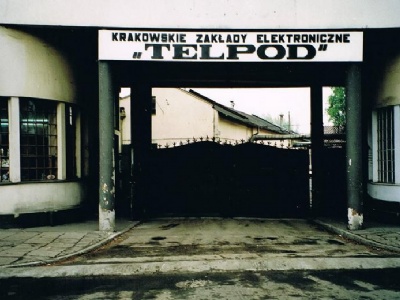Schindler’s Factory
Oskar Schindler was a German businessman and industrialist from Sudeten in present Czech Republic. He was married but that did not stop him from constantly surrounding himself with mistresses. He was a drinker and scrupulous when it came to business. Schindler became a member of the Nazi party in 1939 and as an opportunist, he made good contacts in the wake of the German occupation of Poland. Using laws within what the Nazis called Aryanisation (Jewish industries and businesses were confiscated by non-Jews), Schindler was able to gain control of an enamel factory in Krakow. In the production Schindler used Jewish slave workers. However, Schindler’s developed a special bond to his approximately 1,000 Jewish workers (also called Schindlerjuden). To protect the from being sent away, for instance to Auschwitz, he used all his cunning and charm to prevent these, and if necessary, bribes.
He also arranged a meeting with the Plaszow commandant, Amon Göth, and closed a deal where about 700 Jews were transferred to a small industry under Schindler’s control. He justified his reasons for not allowing his Jews to be deported for the simple reason that it was skilled labor that was important for German war production. He was on several occasion subject of investigations, especially economic ones, but always managed to get away, sometimes through bribes. When the Red Army approached Krakow, he moved about 1,100 Jews to a factory in Brunnlitz in present Czech republic (Czech Brnec) where they produced ammunition until liberation on May 10, 1945.
After the war, Schindler was largely bankrupt and constantly failed his business project, even if he had financial help from various Jewish organizations both inside and outside Germany. He died poor and alone in Frankfurt in 1974 at the age of 66. He he buried in the Catholic cemetery on Mount Zion, Jerusalem. In 1967 he was awarded a place in the garden of the righteous (non-Jews who, at the risk of their own lives, protected Jews during the war) at Yad Vashem in Jerusalem.
Current status: Partly preserved/demolished (2012).
Address: ul. Lipowa 4, 30-001 Krakow.
Get there: Tram to Ghetto Square and then walk to the museum.
Follow up in books: Crowe, David: Oskar Schindler (2007).





Between 1948 and 2002, telecommunications parts were manufactured by a company called Telpod on the premises. The Oscar-winning film Schindler’s List (1993) created a great interest in the Holocaust and now it is possible to make trips in Schindler’s footsteps. The museum in Schindler’s former factory, opened in 2010, has become a major tourist attraction. The museum not only depicts what happened in the factory, but focuses on Krakow during the German occupation where the factory was a part. The museum is very lavish and is well worth a visit despite the commercialism that characterizes the museum. The positive thing about films like Schindler’s list is that it creates an interest in a historical phenomenon, but the negative is that there is a pure commercialism where the Holocaust trivializes and becomes a business idea. On Tadeusza Romanowicza 9 street in a side street near the factory is the villa that Schindler lived in during his time in Krakow.